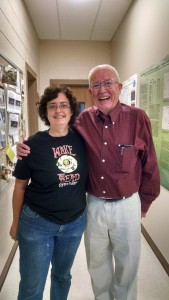water, water everywhere!
During the time between my two sites, I worked on getting as much data as I can to make sure everything is working properly. With the assistance of Vince Debes, I measured the elemental composition of the water samples I collected at Texas State, and was able to compare them to the values I estimated from waterisotopes.org, a fantastic free resource from the University of Utah by Professor Gabriel Bowen (among others). If you’re interested in how they’re able to predict what isotope values should occur at any particular site, they have a great tutorial here.
The precipitation samples I measured – two rainwater samples and one throughfall sample – at sites at Texas State are the same within analytical error, and very similar to the values predicted by Isomap. Throughfall is rainwater that falls through vegetation like trees, and collects dirt, dust and material from the vegetation – and you can see the difference from rainfall in the picture below.

The middle sample was from a site in the middle of a set of trees and is throughfall. The rainfall samples on the right and left were located in open areas.
Stable isotopes are always measured relative to a standard, because we can measure small differences between things far more accurately than the absolute value of something. If you were looking at a group of people, it’s far easier to tell that Jeanette is about 1 inch taller than Maria, than to tell that Jeanette is five foot four inches tall. In the next post, I’ll discuss the results in more detail.







Reply